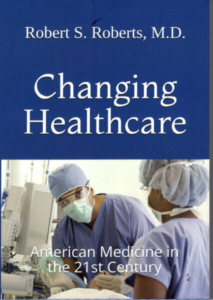The process of reopening our economy is now well under way, but not the school system. As school officials argue over when and how to reopen the schools this fall, some on the left are resisting this move. The Wall Street Journal editorial board says, “Everything else about the coronavirus has become politicized in America, so why not a return to school as well?”
President Trump has pushed for schools to reopen and Secretary of Education Betsy DeVos has supported this policy. Naturally, House Speaker Nancy Pelosi condemns this idea in the strongest possible terms. She said, “I think what we heard from the secretary was malfeasance and dereliction of duty.” So much for civility in Washington these days.
What have we learned from history?
In 1951 the nation was deeply entrenched in the polio epidemic that was especially devastating to children. The same question was posed by health officials then: Should polio close schools? Here is an abstract from the Journal of School Health, published September, 1951:
“The recent severe poliomyelitis epidemic has again revived the question: Shall the schools be closed or children kept out of school in the presence of an epidemic? There has been some agitation for school closure here and some parents delayed sending their children to school last fall. Such parents reason thus: Public health people tell us to avoid crowds; at the same time, they advise us to send our children to school where they may be exposed. On the surface such advice seems inconsistent but practically it has been found, both in America and Britain, that school attendance has no effect on epidemics of polio or any other communicable disease. Numerous epidemiological studies have proved this point beyond controversy.”
“Anderson and Arnstein in “Communicable Disease Control,” 1948, in discussing poliomyelitis, say: “School closure, as well as closure of moving picture theaters, Sunday schools, and other similar groups, is frequently attempted in response to popular demand that ‘something be done.’ Although tried repeatedly, it is of no proved value, never altering the usual curve of the epidemic; nor has the disease been more prevalent or persistent in those communities with the courage to resist such demands.”
Former commissioner of the Food and Drug Administration, Dr. Scott Gottlieb, agrees it is time to reopen the schools. Writing in The Wall Street Journal, Gottlieb says it can be done safely with certain precautions. He says Germany and Norway reopened schools with stringent precautions such as distancing and wearing masks. But when Israel reopened schools, large outbreaks followed, although most infections in both teachers and students were mild.
He suggests the use of hand-washing stations will be routine. Desks will be farther apart. Teachers should be given protective equipment. Classes may be staggered and students may wear masks. Colleges should use pooled testing of students and teachers to reduce risk, and this practice could be adopted widely. Timing of reopening and the measures necessary may vary according to local prevalence of disease.
How risky is the coronavirus to children?
According to the Centers for Disease Control and Prevention (CDC), 30 children under age 15 have died from Covid-19. In a typical year 190 children die of the flu, 436 die from suicide, 625 from homicide, and 4,114 from unintentional deaths such as drowning. Only two children under age 18 have died in Chicago – less than were killed in shootings in a recent weekend! In New York City, 0.03% of children under age 18 have been hospitalized for Covid-19 and 7.5 in one million have died. The death rate for those over age 75 is more than 2,200 times higher than for those under 18.
The differences between Covid-19 and poliomyelitis are significant. Polio was especially virulent and widespread in children and caused crippling effects and many deaths. Covid-19 has been especially benign in the young and rarely causes permanent effects or death. The largest study of 2,100 pediatric Covid patients from China found that 5% of children developed severe disease with low blood oxygen; 0.6% became more critically ill with respiratory failure, shock or multiple organ dysfunction. There is some investigation currently underway concerning a rare inflammatory syndrome related to Covid that can make children seriously ill and damage their hearts.
The risks of children contracting the disease must be measured against the risks of leaving them home where their education and socialization are likely impaired. “Missing school can have serious consequences for child health and wellbeing, particularly for students with disabilities or with special healthcare needs,” American Academy of Pediatrics President Sally Goza said recently.
While some parents are able to effectively educate their children at home, most parents do not have the skills or means to adequately perform those duties. It is the children who will suffer the most. Since the risks and potential sequalae of Covid are far less than polio, the prudent choice is to send children back to school.


